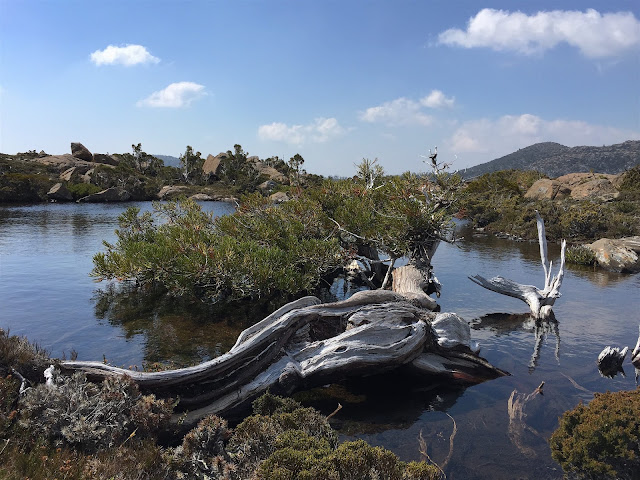So, are we getting old, or just soft?
Yesterday, Dianne and I rode somewhere different. Well, not entirely different, but somewhere we hadn't ridden for at least fifteen years and perhaps even twenty - or maybe more. (My aged memory doesn't remember exactly.)
The story of this ride involves a hill, bike gears and stuff like that, but before I go into the detail here is a photo of Di arriving at the little flat spot on that hill, at Glenlusk, just before we turn off into Molesworth Road and the final short bit of climbing before a nice long descent ...
 |
| Di riding in dappled sunlight |
I was pleased (to tell the truth I was quite relieved) to see a big grin on her face as she had just come up over one of the steeper pinches of the climb, which happens to be right before the end. Here's a cross-section of that hill ...
 |
| Glenlusk Hill |
(Right click on the photo to see the full size image and gradient details).
While I'm at it, here's an image showing the whole ride ...
 |
| New Norfolk via Glenlusk and Molesworth |
... and a cross-section highlighting the hill ...
We had different bikes the last time we rode up the Glenlusk hill. The gearing wasn't nearly as low. We both had standard cranksets with 53/39 tooth chain rings. I think Di's biggest cog on the back was a 27 tooth while mine was a 25 tooth. We are now riding compact cranksets and have much bigger cogs on the back. (For non-cyclists reading this, that's quite a difference.) All I can say is that I'm glad we weren't riding our old bikes: we mightn't have got up the hill this time around! And I'm sure that we used to find the going up this hill a whole lot easier.
So, back to the question at the start of this post. Is it age, or just softness that has made the difference all these years later? Well, let's look at the evidence. Here's a photo of Di at Banjo's in New Norfolk where we stopped for morning tea ...
Hair colour is certainly different from what it was way back then and there might be a few lines that weren't there then (I might get hit for that). But look at that enthusiastic, youthful smile.
And here's one of me ...
Yep, there are a few lines here too and the colour of my hair has changed as well. But hey, how could you call a bloke with a hairstyle like that old?
Hmmm. It would be fair to say we are older, but don't call us old! So, it must be that we've just gotten soft over the years. Of course a few knocks along the way have contributed. Di's hip arthroscopy a decade ago and subsequent advice to stop running along with my hip replacement in 2009 followed by the same advice means that it's not as easy to get a good hard workout to load up the legs. Our muscles might not be quite as resilient as they once were.
We might not ever be as strong as we once were ... actually we definitely won't ever be as strong as we once were. But maybe we can get some of that strength back. While we have been riding hills, including the climb up Mount Wellington, which gets a "hors categorie" rating and the Climbing Cyclist website rates as the fourth hardest climb in Australia, we haven't been doing hills with so much sustained steepness as yesterdays hill.
I think we've got in the habit of settling into a rhythm on climbs so that we don't burn ourselves out, and we know we will often have to finish our rides punching into a sea breeze for 10 or more kilometres. And maybe riding so much on the eastern shore where there aren't so many hills has softened us up too.
Anyway, both of us were really glad to have had a bit of a wake-up call. We discovered when we got home that the itinerary for our upcoming tour had come through. It looks both absolutely wonderful and quite daunting, with some very long days in the saddle, so we know we need to get cracking with our training. More hills. Steeper hills. And we did actually enjoy the struggle up the Glenlusk hill. We'll put it back into our collection of regular rides after a long absence from that list.
Unexpected Bonus!
One reason for going up through Glenlusk yesterday was to get a bit of respite from the wind. We thought that once we got to Berriedale and turned west we might be sheltered by the hill. It turned out that we were right, so we only had about twelve kilometres into the headwind to start the ride. The descent to Sorrel Creek was quite sheltered too and then we only had another five kilometres or so before we had a rest from the wind. But the real bonus of the ride was that we got back to Hobart and home before the sea breeze came through, with a nice little tailwind helping us along.
Here's a photo of us pleased as pie, back in the bike garage under the house at the end of our ride ...
 |
| Us? Old? No way man! |




























